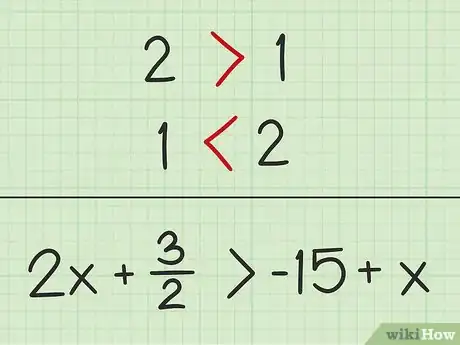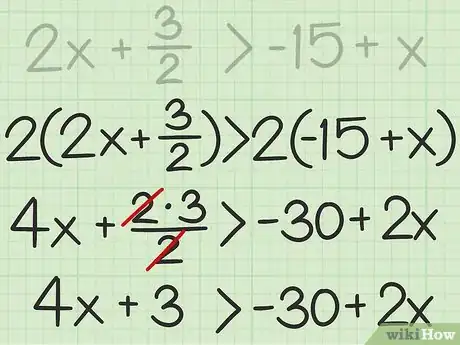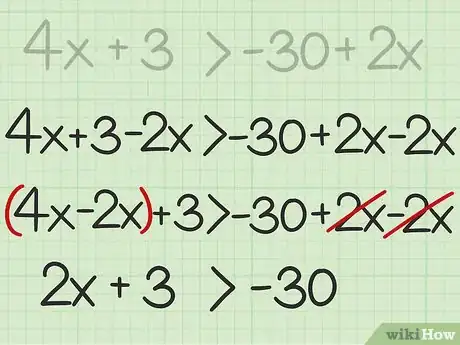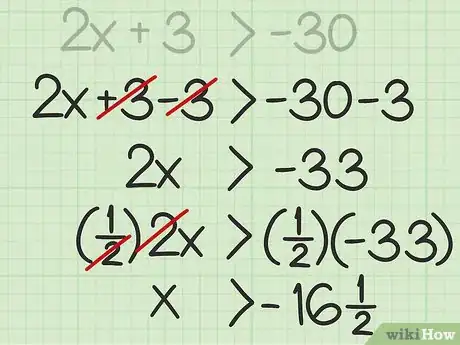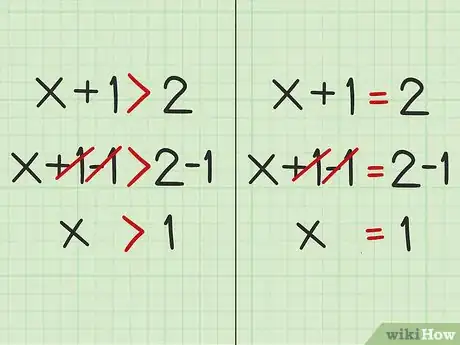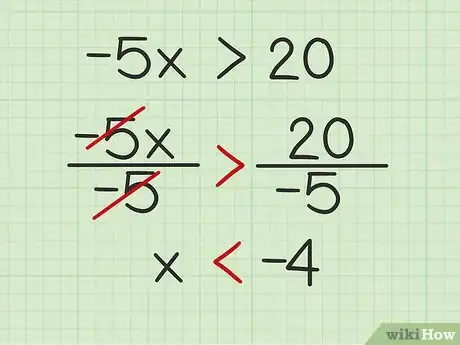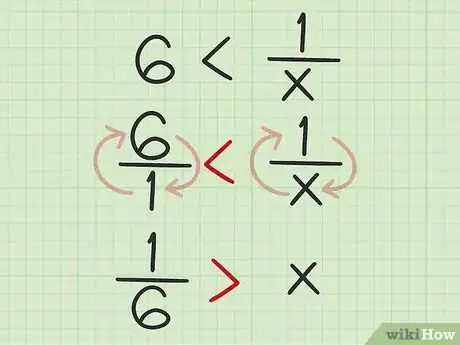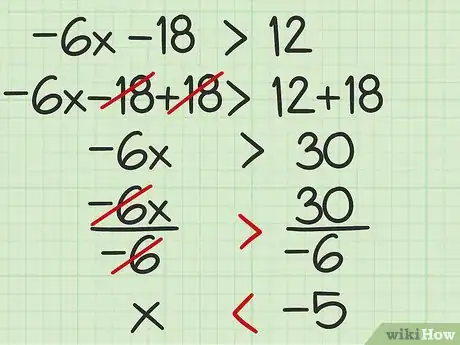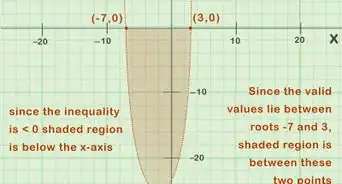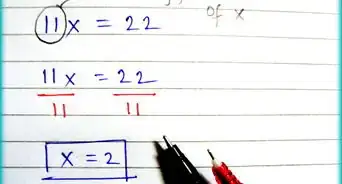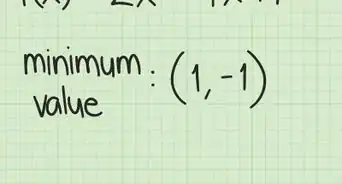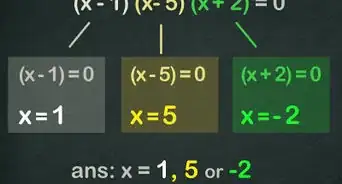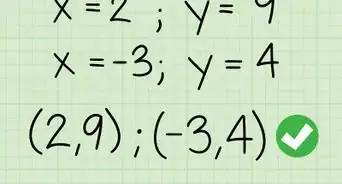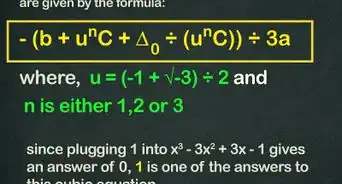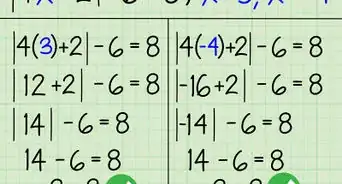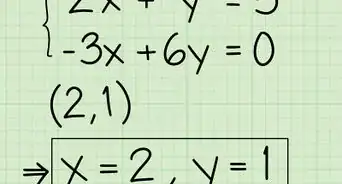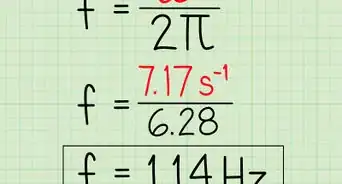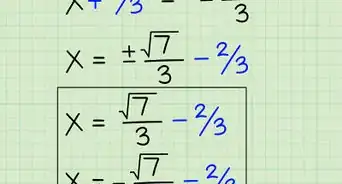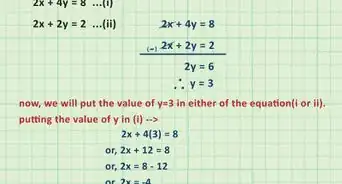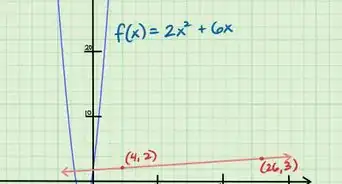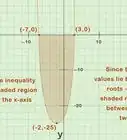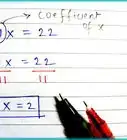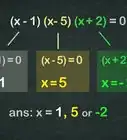This article was co-authored by wikiHow Staff. Our trained team of editors and researchers validate articles for accuracy and comprehensiveness. wikiHow's Content Management Team carefully monitors the work from our editorial staff to ensure that each article is backed by trusted research and meets our high quality standards.
There are 7 references cited in this article, which can be found at the bottom of the page.
This article has been viewed 35,991 times.
Learn more...
A linear equation is a linear function that shows what one value is equal to. Similarly, a linear inequality is also a linear function, but it shows a relationship between values using “greater than” or “less than" signs. Like linear equations, you can solve a linear inequality by using algebra to isolate the variable. Inequalities, however, have a few special rules that you need to pay close attention to.
Steps
Solving Linear Inequalities
-
1Understand the inequality signs. An inequality is like an equation, except instead of saying that the two values are equal, an inequality shows a “greater than” or “less than” relationship. The sign means “greater than.” The means “less than.”[1]
- For example, means that the value on the left side of the inequality is greater than the value on the right side.
-
2Combine like terms, or otherwise simplify the inequality. You can solve inequalities using the same algebraic principles you would use to solve an equation.[2] You might need to combine variables, multiply to cancel out fractions, or use other operations to make the numbers easier to work with. Remember that you need to keep the inequality balanced, so whatever operation you perform on one side of the inequality, you must also perform on the other side.
- For example, if solving the inequality , you would first multiply each part by 2 to cancel out the fraction:
Advertisement - For example, if solving the inequality , you would first multiply each part by 2 to cancel out the fraction:
-
3Move the variable to one side of the inequality. To do this, add or subtract variables from one side of the inequality. Remember that whatever you do to one side, you must also do to the other side.
- For example, in the inequality , to move the variable to one side, you would subtract from both sides of the inequality:
- For example, in the inequality , to move the variable to one side, you would subtract from both sides of the inequality:
-
4Isolate the variable. In order to solve the inequality, the variable should be on one side, without coefficients or constants. Divide to cancel out coefficients, and add or subtract to remove constants. Once you have isolated the variable, you have solved the inequality.
- For example, in the inequality , to isolate the you need to subtract 3 from both sides, then divide both sides by 2:
- You can use interval notations to represent the solution to this inequality. [3] For this example, it would be given as
- For example, in the inequality , to isolate the you need to subtract 3 from both sides, then divide both sides by 2:
Reversing the Sign
-
1Approach the inequality as you would an equation. Use addition, subtraction, multiplication, and division to move the variable to one side and isolate it. Once you have isolated the variable, you have solved the inequality.
-
2Reverse the inequality sign whenever you multiply or divide by a negative number. When using algebra to solve the inequality, pay close attention whenever you multiply or divide. When you multiply or divide the inequality by a negative number, you must reverse the direction of the inequality sign.[4]
- For example, to solve the inequality , you need to divide each side by to isolate the variable. Thus, you need to reverse the direction of the inequality sign:
In the interval notation :
- For example, to solve the inequality , you need to divide each side by to isolate the variable. Thus, you need to reverse the direction of the inequality sign:
-
3Reverse the inequality sign whenever you take the reciprocal of both sides. This is only the case if both sides are negative, or if both sides are positive.[5] The reciprocal of a number is shown by .[6]
- For example, to solve the inequality , you would isolate the by taking the reciprocal of both sides. Since both sides are positive, you need to reverse the inequality sign:
In the interval notation :
- For example, to solve the inequality , you would isolate the by taking the reciprocal of both sides. Since both sides are positive, you need to reverse the inequality sign:
Solving Sample Problems
-
1Solve this inequality:
- Combine like terms on the right side of the inequality:
- Move the variable to one side by subtracting from both sides:
- Isolate the variable by subtracting 2 from both sides:
In the interval notation :
-
2Solve this inequality in which you need to reverse the sign:
- Isolate the variable by adding 18 to both sides:
- Divide both sides by -6. Since you are dividing by a negative number, you need to reverse the inequality sign:
In the interval notation :
- Isolate the variable by adding 18 to both sides:
-
3Solve this compound inequality: . An inequality with more than two parts is called a compound inequality.[7] You can solve these the same way you would simple inequalities.
- To isolate the variable, subtract 4 from all three parts:
- Divide each part by 2:
In the interval notation :
- To isolate the variable, subtract 4 from all three parts:
Community Q&A
-
QuestionHow do I choose a number I can divide, subtract or add when doing inequalities?
 Community AnswerIn general you want to choose an operation that makes the inequality simpler. If an unknown appears on both sides of the inequality, add/subtract terms to get all of the variables on the same side so that you can combine like terms on that side. Reducing the number of times "x" appears in your inequality makes it simpler. If the unknown only appears once, but has a coefficient in front of it, divide both sides by that coefficient. A plain x in an inequality is simpler than a 7x, so this too makes it simpler.
Community AnswerIn general you want to choose an operation that makes the inequality simpler. If an unknown appears on both sides of the inequality, add/subtract terms to get all of the variables on the same side so that you can combine like terms on that side. Reducing the number of times "x" appears in your inequality makes it simpler. If the unknown only appears once, but has a coefficient in front of it, divide both sides by that coefficient. A plain x in an inequality is simpler than a 7x, so this too makes it simpler.
Warnings
- Inequalities in which you need to divide by a variable cannot be solved, except in cases that explicitly state that the variable is positive or negative. Otherwise, you cannot know whether or not you need to reverse the sign when dividing or multiplying.[8] But in these situations you can assume both cases (the positive and negative) and obtain solutions for the cases separately.⧼thumbs_response⧽
References
- ↑ https://www.mathsisfun.com/algebra/inequality-properties.html
- ↑ https://www.youtube.com/watch?v=ypkXH1mhC50
- ↑ https://www.khanacademy.org/math/algebra-basics/alg-basics-linear-equations-and-inequalities
- ↑ https://www.khanacademy.org/math/algebra/one-variable-linear-inequalities/alg1-two-step-inequalities/v/solving-inequalities
- ↑ https://www.mathsisfun.com/algebra/inequality-properties.html
- ↑ https://www.mathopenref.com/reciprocal.html
- ↑ https://www.khanacademy.org/math/algebra/x2f8bb11595b61c86:solve-equations-inequalities/x2f8bb11595b61c86:compound-inequalities/a/compound-inequalities-review
- ↑ https://www.mathsisfun.com/algebra/inequality-solving.html
